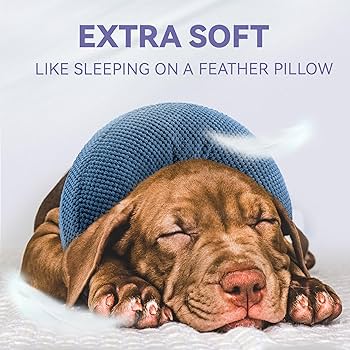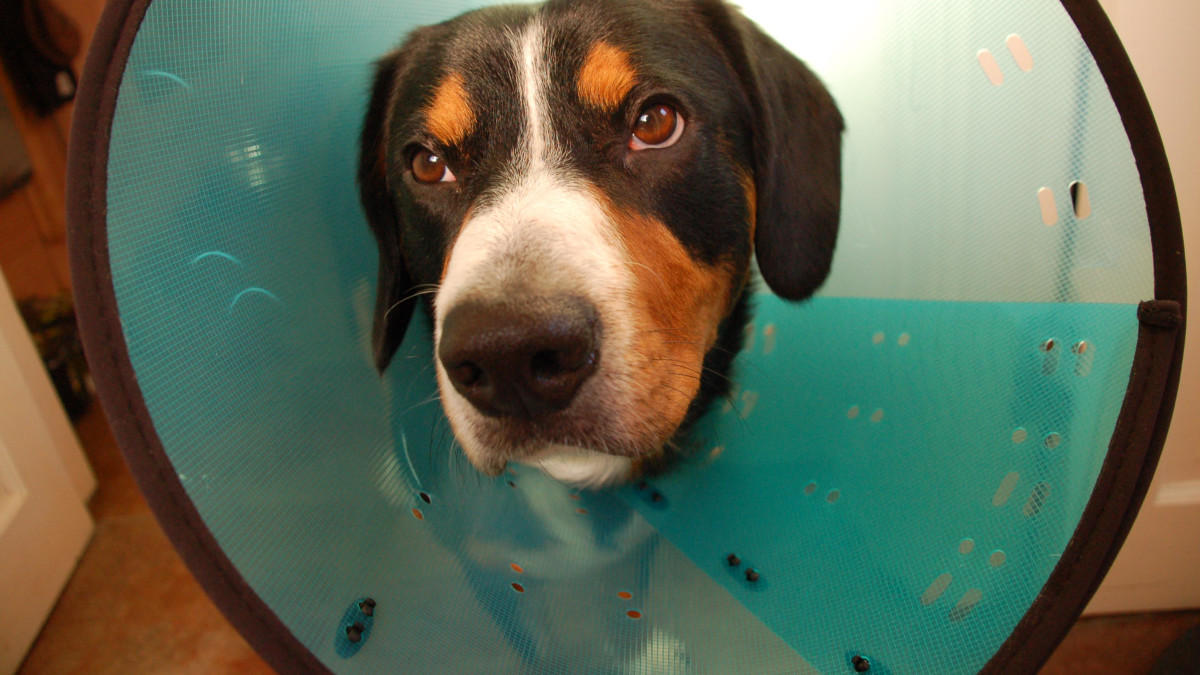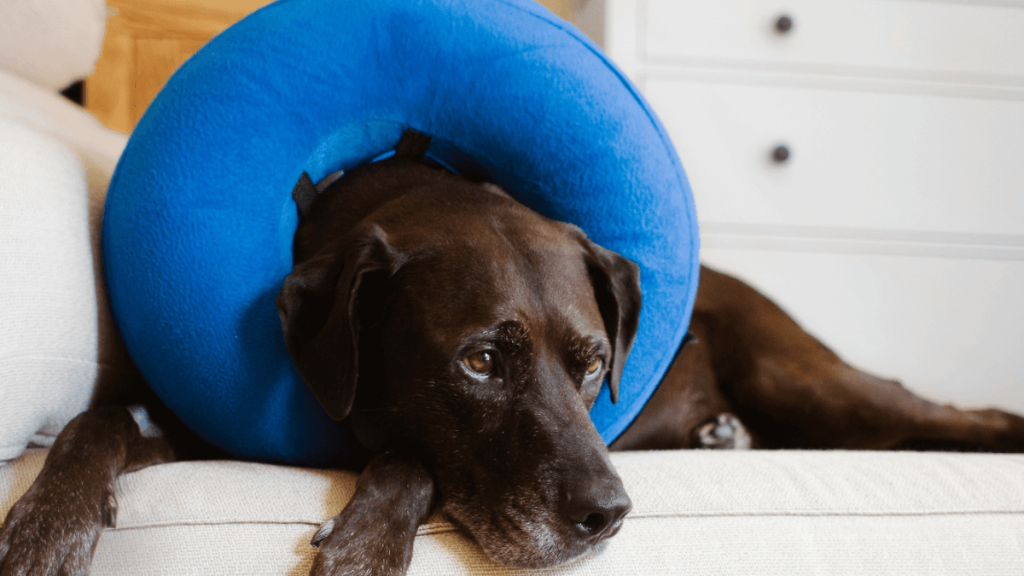Have you ever wondered if your dog should sleep with his collar on? It’s a question many pet owners ask but rarely find a clear answer to.
You want what’s best for your furry friend, and sometimes small choices like this can make a big difference. Leaving a collar on overnight might seem harmless, but could it affect your dog’s comfort or safety? Keep reading to discover important facts that will help you decide what’s right for your dog and give you peace of mind every night.
Risks Of Sleeping With A Collar
Leaving your dog’s collar on during sleep might seem harmless, but it carries some real risks you should consider. Dogs move a lot in their sleep, and a collar can cause unexpected problems during these restless moments. Understanding these dangers helps you decide what’s best for your furry friend’s safety and comfort.
Choking And Strangulation Hazards
Collars can get caught on objects like bed frames, furniture, or even their own paws while your dog sleeps. This creates a choking risk that can quickly become life-threatening. Have you ever noticed how your dog sometimes twists or scratches in their sleep? Imagine a collar caught tight during those moments—it’s a dangerous situation.
Loose collars might slip over the head, but tight collars increase strangulation risks. Removing the collar at night eliminates these hazards entirely.
Skin Irritation And Discomfort
Collars worn for long periods, especially during sleep, can cause skin irritation. Sweat, dirt, and oils build up under the collar, leading to redness and even sores. Your dog can’t tell you when they feel itchy or uncomfortable, but constant rubbing during sleep can make it worse.
Think about your own neck after wearing a tight or dirty necklace all day—it’s uncomfortable and sometimes painful. Your dog feels the same, if not more, under their collar at night.
Collar Damage And Wear
Sleeping with a collar on speeds up its wear and tear. Dogs turn, twist, and nestle into bedding, which can fray or weaken the material. A damaged collar might break when your dog is outside, losing identification or control.
Keeping collars off during sleep helps them last longer and ensures they remain reliable when your dog needs them most.

Credit: www.amazon.ca
Benefits Of Removing The Collar At Night
Removing your dog’s collar at night offers several important benefits. It helps keep your pet comfortable and safe during sleep. Letting your dog rest without a collar can improve their overall health and well-being. Here are some key advantages of taking the collar off before bedtime.
Improved Comfort And Rest
Collars can feel tight or heavy around your dog’s neck. Removing the collar allows their skin to breathe. It prevents irritation or rubbing during sleep. Dogs sleep better without anything restricting their movements. A collar-free neck helps your dog relax fully. This leads to deeper, more restful sleep and better energy the next day.
Preventing Collar-related Injuries
Collars left on overnight can cause injuries. Dogs may catch their collar on furniture or objects. This can lead to choking or cuts on their neck. Sleeping with a collar might cause hair loss or sores. Removing the collar lowers the risk of these problems. Your dog stays safer and avoids painful wounds.
Reducing Bacterial Build-up
Collars collect dirt, sweat, and bacteria throughout the day. Wearing a collar at night traps moisture against the skin. This creates a perfect place for bacteria to grow. Removing the collar lets the neck dry and stay clean. It helps prevent infections and bad odors. Keeping your dog’s neck clean supports healthy skin.
When To Keep The Collar On
Deciding when your dog should keep their collar on during sleep depends on several important factors. Some situations call for extra caution, while others allow for collar-free rest. Understanding these moments helps ensure your dog’s safety and comfort overnight.
Identification And Safety Reasons
Collars with ID tags help identify your dog quickly. If your dog escapes or gets lost at night, the collar is vital. It shows contact details and medical info. Keeping the collar on can prevent long searches. It also signals to neighbors or rescuers that your dog has an owner.
Medical Or Behavioral Considerations
Some dogs wear collars for medical reasons. For example, collars with flea or tick treatments must stay on. Dogs with anxiety may feel more secure with their collar on. It provides a familiar comfort that helps them relax. Always check your vet’s advice about collars and health needs.
Outdoor Sleeping Situations
Dogs sleeping outside often need collars for safety. The collar allows quick control with a leash if needed. It also helps others identify your dog if they wander. Reflective or glow-in-the-dark collars improve visibility at night. This reduces the risk of accidents or wildlife encounters.

Credit: www.reddit.com
Choosing The Right Collar For Night
Choosing the right collar for your dog at night is important for comfort and safety. A collar that fits well and suits your dog’s needs can prevent accidents and keep them secure. Consider the material, safety features, and visibility to find the best option for nighttime wear. Below are key points to help you make the right choice.
Breakaway Collars For Safety
Breakaway collars release under pressure to prevent choking. They are perfect for dogs that sleep with their collars on. This type reduces risk if the collar gets caught on something. Choose a breakaway collar to keep your dog safe during sleep.
Material And Fit Importance
Soft, lightweight materials improve comfort for nighttime wear. Nylon and cotton blends are gentle on the skin. Avoid collars that are too tight or too loose. Measure your dog’s neck and allow space for two fingers. A well-fitted collar prevents irritation and slipping off.
Reflective And Light-up Options
Reflective collars increase your dog’s visibility in low light. Light-up collars add extra safety for night walks or outdoor sleeping. These options help you spot your dog easily. Choose collars with reflective strips or LED lights for better night safety.
Alternative Identification Methods
If you’re unsure about leaving your dog’s collar on while they sleep, there are several alternative ways to ensure your furry friend is always identifiable. These options can provide peace of mind without the risks that collars sometimes pose during rest. Let’s look at some effective identification methods that might work better for your dog’s safety and comfort.
Microchipping Benefits
Microchipping is a small, painless procedure that implants a tiny chip under your dog’s skin. This chip holds a unique ID number linked to your contact information in a national database.
Unlike collars, microchips can’t be lost or removed. If your dog ever wanders off, shelters and vets can scan the chip and quickly find you. It’s a one-time investment that lasts a lifetime.
Id Tags And Harnesses
If you prefer visible ID, consider attaching tags to a harness instead of a collar. Harnesses spread pressure evenly and reduce the risk of neck injuries, especially during sleep or play.
- Choose sturdy harnesses with secure attachment points for ID tags.
- Make sure tags include your phone number and your dog’s name.
- Check tags regularly to ensure they’re legible and not damaged.
Harnesses are great for dogs who pull or have sensitive necks. They provide a safer spot for identification without the constant wear of a collar.
Gps Trackers
GPS trackers are a modern way to keep tabs on your dog’s whereabouts. These devices often attach to collars or harnesses and sync with your smartphone.
They allow you to monitor your dog in real-time and set safe zones that alert you if your pet wanders off. This technology adds a layer of security that traditional collars can’t offer.
Think about whether you want just identification or active tracking too. GPS trackers can be a game-changer, especially for dogs who love to explore beyond the yard.

Credit: pethelpful.com
Tips For Safe Collar Use
Keeping your dog’s collar safe and comfortable is important. Proper collar use prevents accidents and skin problems. Follow these tips to ensure your dog wears the collar safely, whether at home or outside.
Regular Collar Checks
Check the collar daily for signs of wear or damage. Look for frayed edges, broken clasps, or loose tags. Remove the collar if it looks worn out. This helps avoid injuries or choking hazards. Also, check your dog’s neck for redness or irritation.
Proper Collar Sizing
Choose a collar that fits well but is not too tight. You should fit two fingers between the collar and your dog’s neck. A collar too loose can slip off. Too tight can cause discomfort or breathing problems. Adjust the collar as your dog grows or gains weight.
Cleaning And Maintenance
Clean the collar regularly to prevent dirt and bacteria build-up. Use mild soap and warm water for cleaning. Rinse well and let it dry completely before putting it back on. Leather collars may need special conditioner. Keeping the collar clean protects your dog’s skin and health.
Frequently Asked Questions
Should Dogs Wear Collars While Sleeping?
It is generally not recommended for dogs to wear collars during sleep. Collars can cause discomfort or injury if caught on objects. Removing collars at night reduces risk and allows your dog to rest comfortably and safely.
Can Sleeping With Collars Harm My Dog?
Yes, collars can harm dogs while sleeping. They may cause skin irritation or choking if caught on bedding or furniture. Removing the collar at night prevents potential injuries and ensures your dog’s safety.
Are There Benefits To Leaving Collars On Overnight?
Leaving collars on overnight offers limited benefits. Identification tags remain accessible, but safety risks often outweigh this. Consider using breakaway collars or removing collars to keep your dog safe during sleep.
How Do I Keep My Dog Safe Without A Collar At Night?
Ensure your dog has proper ID tags attached to a breakaway collar during the day. Remove the collar before bedtime to prevent accidents. Microchipping your dog provides additional identification if the collar is off.
Conclusion
Deciding whether your dog should sleep with a collar depends on safety. Some collars can cause discomfort or injury during sleep. Always check for loose parts or tags. If your dog feels relaxed without a collar, consider removing it at night.
Prioritize your dog’s comfort and safety. Observe how your dog behaves with and without a collar during sleep. Consult your vet for personalized advice. Their guidance can help ensure your pet’s well-being. Ultimately, your dog’s health and happiness matter most.
Make a choice that fits their needs best.

